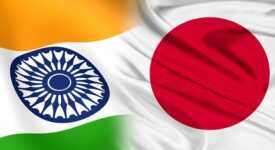Following the shock of Brexit, it has become increasingly clear among the EU’s top officials that the European Union must revamp the narrative it is offering to its citizens. Maroš Šef?ovi?, Vice-President of the European Commission, stressed, when speaking to the participants of the Brussels Summer School for Young Leaders (www.glstudyabroad.com) that it was of utmost importance for the EU to work on the way it communicates with its people. To put it more bluntly, the responsibility for today’s crisis does not lie only with the EU’s institutions or the cumbersome decision-making processes in Brussels but also in the European Union’s lack of up-to-date and relevant communication with the Europeans and the media.
Given the level of negativisim towards “Brussels“ – as the EU is often described as if it was some kind of a vague and autonumous structure – that has for years been spread by the mainstream media all across the Union, it is hardly surprising that an average EU national feels enstranged from the EU institutions, their purpose and everyday activities. The EU has for long been subject of censure and such mockery that an average EU citizen has actually in the meantime forgotten about the positives (and there are, in fact, a great many) of the ‚European project‘.
The EU does have a department of communication – Directorate-General (DG) Communication – and while this should in theory be in charge of the EU‘s “marketing strategy“, it does not operate with a very exciting budget. The EU Commisison has a yearly budget of about €500 million, which is allocated to each DG. DG Communication is the main body responsible for communications and as such is allocated about a fifth of the total. To put things into perspective, the annual EU budget (2015 figures) is €145 billion, which means communication gets about 0.34 percent of the block‘s budget.
Understandably, it is politically difficult to push for more money on something – seemingly – as meaningless as – marketing and communication. This is especially true during the times of crises. Facing the migration issues and dealing with the consequences of the financial and economic crisis, the EU institutions have very little leverage to advocate for more budget on “softer“ areas. However, in the corporate world, evidence suggests that those commercial brands that understand the importance of marketing and do not slash their budgets during the crises are poised to grow much more when the crises are over. This should go for the EU as well – the time of crisis is precisely the time when communication is crucial and needed the most.
DG Communication is “in charge of informing and communicating about the policies of the European Union with the public at large“ but often informing about very marginal policies and printing brochures is not really the way marketing is done these days. Instead of informing about the directives on the shape of bananas, which has become legendary over time, the EU should leverage the power of storytelling and digital to remind people what are the good things the EU has brought to their lives.
Just imagine a digital piece of content showing a young “cross-EU-border“ couple, of which there are plenty thanks to numerous student and academic mobilities financed by the EU, talking about their experiences and possibilities all facilitated by the EU programs. Imagine a piece of viral video telling the story of a small business owner in one of the EU’s regions talking about an EU grant that helped him both grow his own company while also contributing to the wellbeing of his/her region. Now imagine all this in these people‘s native languages and compare it to a boring publication on EU funds that no one reads. While companies understood long ago what the future of powerful branding lies in, Europe’s leaders still pretend that one cannot use corporate practices in political communications.
However, not all public entities are shy to build powerful brands for their institutions. For example, the latest Facebook posts of the White House actually speak about the things that ordinary people can relate to – for example, showcasing the history of exercise in the US in celebration of the 60th anniversary of the President’s Council of Fitness, Sports & Nutrition or announcing the arrival of the first scheduled US flight in Cuba in more than 50 years.
The EU institutions must finally understand that it is not enough to do good things for people. The people must be reminded of the benefits in their everyday lives and they must be reminded via easily accessible and popular channels. These are not printed publications on EU budgets or sporadic social media posts on the latest directives. The EU must harness the power of storytelling and digital and finally hammer out a solid state-of-the-art strategy to sell the idea of unified Europe and re-connect with its people.







